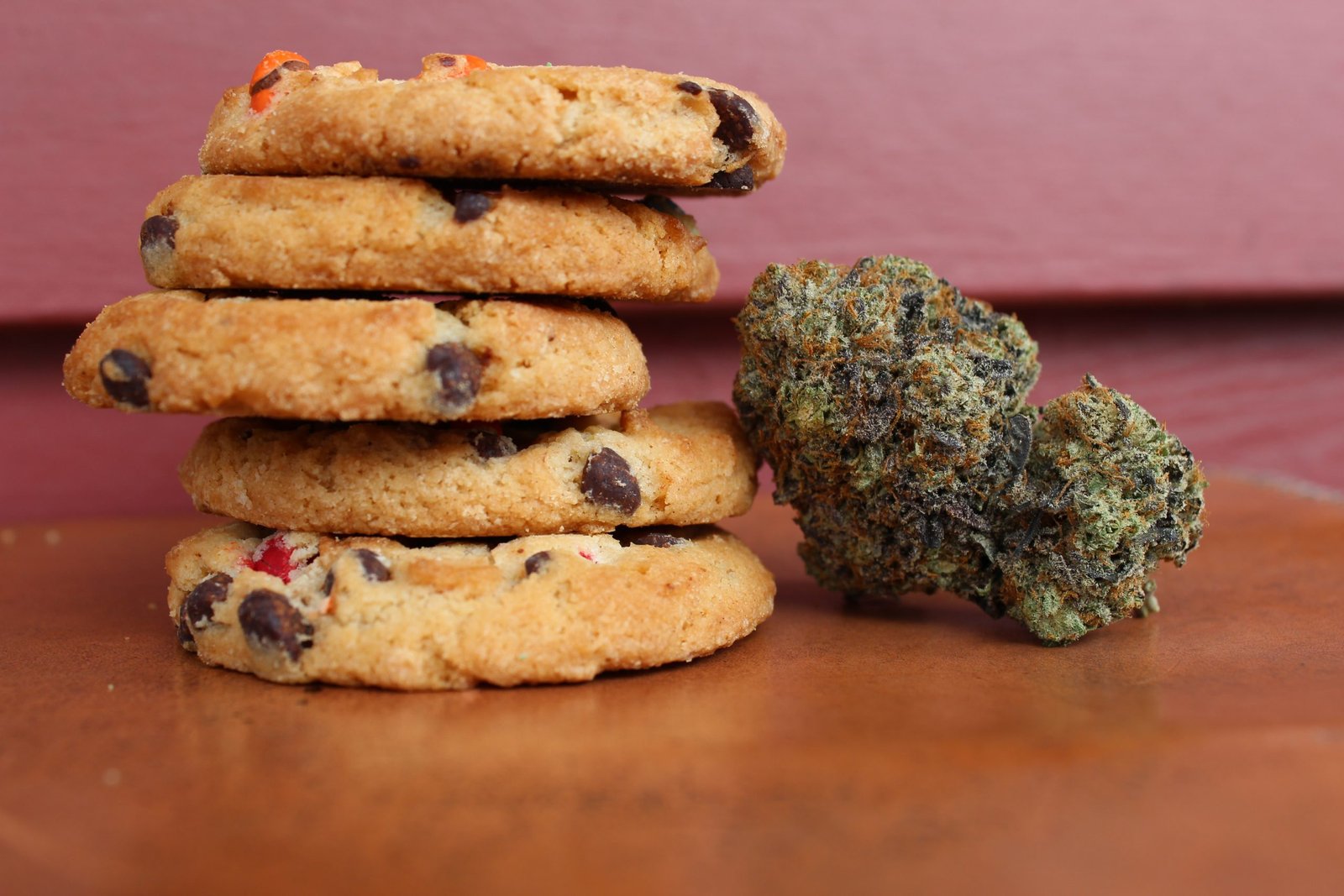
How to Make Cannabis Edibles That are Vegan and Gluten-Free
Written: editor | June 20, 2023
Understanding Vegan Cannabis Edibles
Vegan Edibles Basics
Vegan cannabis edibles are plant-based infused treats that do not contain any animal-derived ingredients. Popular types of vegan cannabis edibles include gummies, chocolates, brownies, cookies, and herb. It is crucial to use quality herb when making these edibles to ensure the final product is both potent and delicious.
When creating vegan cannabis edibles, individuals often turn to plant-based oils such as coconut oil instead of traditional dairy products. By using high-quality ingredients like herb and oils, individuals can create flavorful and effective vegan cannabis edibles that cater to a wide range of dietary preferences.
Health Benefits
Consuming vegan cannabis edibles may offer potential health benefits such as pain relief, herb, oils, and improved sleep quality. However, it’s important for individuals to consider the appropriate dosage and consumption method for their specific needs. Overconsumption of cannabis-infused products, fat, milk, jar can lead to adverse effects such as dizziness or nausea.
It’s essential for consumers to be aware of possible side effects and take necessary precautions when consuming vegan cannabis edibles. Starting with a low dose and gradually increasing intake can help mitigate potential adverse reactions while allowing individuals to gauge their tolerance levels effectively.
Legal Considerations
The legal regulations surrounding the production and consumption of cannabis edibles vary between states or countries. It is crucial for individuals interested in making vegan cannabis edibles to stay informed about local laws regarding marijuana-infused products. Failure to adhere to these regulations could result in legal repercussions.
Selecting Quality Ingredients
Cannabis Selection
Understanding different strains is crucial. Factors like THC and CBD levels, flavor profiles, and the desired effects on the body play a significant role. For instance, using a strain with high THC content might result in a more potent edible.
Consider the entourage effect when choosing cannabis for edibles. This refers to how various compounds in cannabis work together to create unique effects. It’s essential to select strains that align with your desired outcome.
Tips for sourcing high-quality cannabis include buying from reputable dispensaries or growers who prioritize mindful consumption and sustainable practices. Look for products that are lab-tested and labeled accurately to ensure safety and potency.
Vegan Ingredient Alternatives
Common non-animal-based ingredients used in vegan edibles include almond milk, coconut oil, flaxseed meal (as an egg substitute), and applesauce (for moisture). These alternatives provide similar functionalities as dairy or eggs but cater to vegan product requirements.
Substitutes like almond milk can replace dairy in recipes while maintaining creaminess and richness. Flaxseed meal mixed with water creates a gel-like consistency that mimics eggs’ binding properties without altering taste significantly.
Maintaining flavor and texture in vegan recipes involves experimenting with various plant-based ingredients such as aquafaba (chickpea brine) as an egg white replacement or nutritional yeast for a cheesy flavor boost.
Decarboxylation Process
Importance of Decarb
Decarboxylation is a crucial step in making vegan cannabis edibles. This process involves heating the cannabis to activate its compounds, such as THC and CBD. Without decarbing, these compounds remain inactive and won’t have any effect when consumed.
The impact of decarbing on the potency of edibles is significant. Properly decarbed cannabis ensures that the final product will have the desired psychoactive effects or therapeutic benefits. It’s like unlocking the full potential of cannabis for your vegan edibles.
Step-by-Step Guide
To start with, finely grind your cannabis before spreading it evenly on a baking sheet lined with parchment paper. Then, bake it in an oven at 240°F for 30-40 minutes until it turns light golden brown.
After cooling, you can use this activated cannabis to infuse into various vegan recipes like coconut oil or almond milk-based treats. Following precise instructions during this process is key to achieving consistent results each time.
For beginners, ensuring success means carefully monitoring the temperature and time during decarboxylation to avoid overcooking or burning the cannabis. Investing in a quality oven thermometer can help maintain accuracy throughout this critical step.
Crafting Vegan Cannabutter
Different Cooking Methods
There are various cooking methods suitable for making vegan cannabis edibles. One popular method is using a slow cooker, which allows for a gentle and consistent infusion of cannabis into the vegan ingredients. Another method is using a stovetop with a double boiler to ensure that the infusion process occurs without overheating or burning the ingredients.
Some individuals prefer this method as it provides an excellent way to incorporate infused vegan cannabutter or oil into recipes like brownies, cookies, or cakes. Each cooking method offers unique benefits in terms of flavor extraction and potency retention.
Factors to Consider
When choosing a cooking method for making vegan cannabis edibles, several factors should be taken into consideration. The first factor is temperature control; maintaining low heat during the infusion process helps prevent the degradation of cannabinoids and preserves their effectiveness.
Another crucial factor is time; different methods require varying durations for optimal infusion. For instance, while using a slow cooker might take several hours, stovetop infusions could be quicker but require constant attention.
Tips for Optimizing Infusion Process
To optimize the infusion process when making vegan cannabis edibles, consider stirring regularly if you’re using stovetop methods to ensure even distribution of cannabinoids throughout the ingredients. Covering your infusing mixture can help retain moisture and prevent evaporation of essential oils from both your vegan ingredients and cannabis.
Maintaining steady heat during infusions also contributes significantly to achieving consistent results across batches.
Dosage and Potency Management
Calculating THC Content
When making vegan cannabis edibles, it’s crucial to calculate the THC content accurately. One method is to determine the THC percentage in the cannabis strain you’re using. For example, if your strain has 15% THC, then 1 gram of that strain contains 150mg of THC. Another way is to use online calculators or mobile apps specifically designed for this purpose.
Understanding the importance of accurate dosing is essential because consuming too much THC can lead to unpleasant experiences, especially for new users. On the other hand, not having enough potency may result in dissatisfaction with the effects.
Tools like dosage calculators and infusion machines are available to assist with THC calculations. These tools help ensure that you achieve consistent potency across your vegan cannabis edibles while minimizing guesswork.
Serving Size Guidelines
Factors such as individual tolerance levels, body weight, metabolism, and experience with cannabis should be considered when determining serving sizes for vegan edibles. It’s important to start with a low dose and gradually increase until you find what works best for you.
Recommended serving size guidelines typically suggest starting with 5-10mg of THC for beginners and increasing up to 20-30mg for more experienced consumers. Clear labeling on your homemade vegan edibles is crucial so that consumers know exactly how much they are consuming.
Importance lies in clear communication about serving sizes – whether through packaging or verbal instructions – as this helps prevent accidental overconsumption.
Vegan Cannabis Edibles Recipes
When making vegan cannabis edibles, popular sweet options include brownies, cookies, and gummies. Achieving the perfect balance of sweetness and potency is crucial. For instance, using vegan chocolate chips in brownies or adding extra fruit puree to a recipe can help mask the taste of cannabis while enhancing the overall flavor.
Creative ideas for incorporating cannabis into desserts involve experimenting with different textures and flavors. Consider infusing coconut oil with cannabis to create a smooth texture in no-bake cheesecakes or blending dates and nuts with infused coconut oil for energy balls.
For those interested in savory vegan cannabis snacks, recipes like infused hummus, guacamole, or seasoned nuts are popular choices. Balancing flavors and textures is essential when creating savory edibles. Infusing olive oil with herbs and spices before mixing it into a dip can add depth without overwhelming the dish’s natural taste.
When considering infusing savory dishes with cannabis, it’s important to remember that some herbs like basil or oregano complement the earthy undertones of cannabis well. However, strong-flavored strains might overpower delicate dishes; hence milder-tasting strains work best in such cases.
Infused lemonades, teas, or fruit smoothies are excellent choices for creating refreshing beverages. Factors to consider when infusing liquids with cannabis include decarboxylating the herb before steeping it in hot liquids to activate its psychoactive properties effectively.
Serving suggestions can include garnishing drinks with fresh herbs like mint leaves or decorating glass rims with colored sugar crystals for an added visual appeal.
Tips for Successful Vegan Edibles
When making vegan cannabis edibles, it’s crucial to balance flavors effectively. A common pitfall is overpowering the infusion with strong flavors, so start with subtle additions and taste as you go. For instance, when creating vegan cannabis brownies, consider adding a touch of vanilla or almond extract to complement the earthy notes of cannabis.
Another technique for flavor balancing is using citrus fruits like lemon or orange to brighten up the taste without overshadowing the cannabis infusion. Incorporating natural sweeteners such as agave syrup or maple syrup can help counteract any bitterness from the cannabis while enhancing overall flavor.
To avoid overwhelming the palate with intense herbal tastes, infuse oils or butters with dried herbs like rosemary or thyme before using them in recipes. This imparts a gentle herbaceous note without dominating the dish.
Texture plays a vital role in vegan cannabis edibles. Achieving desirable textures often involves experimenting with different binding agents like flax eggs, aquafaba (chickpea brine), or agar-agar to replace traditional animal-based ingredients like eggs and gelatin.
For chewy treats such as gummies, adjusting agar-agar quantities can help achieve that perfect firmness without compromising on being vegan-friendly. When baking cookies or cakes, utilizing ripe mashed bananas can enhance moisture and texture while adding natural sweetness.
Common challenges related to texture include achieving proper consistency in chocolates and achieving ideal crispiness in baked goods without using butter. However, these challenges have solutions through careful temperature control during preparation and experimentation with alternative fats such as coconut oil.
The visual appeal of homemade vegan cannabis edibles significantly impacts their overall dining experience. Creative presentation ideas could involve decorating infused truffles with edible flowers for an elegant touch or serving colorful fruit skewers alongside infused dipping sauces for an enticing display.
Moreover, considering contrast in colors and textures when plating enhances visual interest; pairing a rich chocolate dessert with vibrant berries creates an appealing presentation that entices both eyes and taste buds simultaneously.
Troubleshooting Common Issues
Potency Problems
When making vegan cannabis edibles, achieving the desired potency can be a challenge. Common issues include uneven distribution of cannabis in the mixture, resulting in inconsistent potency throughout the batch. To troubleshoot this, consider using finely ground cannabis and ensuring thorough mixing to achieve an even distribution. Factors such as decarboxylation efficiency and infusion time also play crucial roles in determining potency levels.
To adjust potency levels, you can experiment with varying amounts of infused oil or butter in your recipes. By increasing or decreasing the amount of infused ingredients used, you can fine-tune the overall strength of your cannabis-infused treats. It’s essential to keep track of these adjustments to maintain consistency across batches.
Texture Troubles
Texture problems are another common issue when creating vegan cannabis edibles. For instance, cookies may turn out too crumbly or brownies too dense due to incorrect ingredient ratios or baking times. Address texture issues by adjusting the ratio of wet to dry ingredients and experimenting with different binding agents like flax eggs or aquafaba for improved texture and moisture retention.
The importance of texture cannot be overstated. A well-balanced texture enhances the overall eating experience, making it crucial to troubleshoot and refine this aspect during the recipe development process.
Preservation Challenges
Preserving homemade vegan cannabis edibles presents its own set of challenges, especially considering their perishable nature compared to non-infused treats. To extend shelf life, store your edibles in airtight containers away from light and heat sources—this helps maintain their quality over time.
Another strategy involves refrigerating or freezing your creations for longer-term preservation while maintaining freshness and preventing spoilage.
Frequently Asked Questions
How can I ensure my vegan cannabis edibles are potent enough?
To ensure potency, focus on the decarboxylation process to activate the THC in your cannabis. Accurately measure and manage the dosage of cannabis-infused ingredients in your recipes.
What are some common issues when making vegan cannabis edibles?
Common issues include uneven potency throughout the batch, strong plant flavor, and difficulties with binding ingredients. These can often be mitigated by refining techniques such as straining well or experimenting with different flavors to mask the plant taste.
Can I use any type of cannabis for making vegan edibles?
Yes, you can use various types of cannabis strains for infusing into vegan edibles. However, consider factors like THC and CBD content when selecting a strain that aligns with your desired effects for the edibles.
Are there specific quality ingredients I should prioritize for vegan cannabis edibles?
Prioritize high-quality organic ingredients whenever possible to enhance both the flavor and health benefits of your vegan cannabis edibles. Opt for premium non-dairy products and fresh produce to elevate the overall quality of your creations.
What’s an essential tip for successfully crafting vegan cannabutter?
A crucial tip is maintaining a low heat during infusion to prevent scorching or degrading cannabinoids. This ensures that you extract maximum potency from the cannabis without compromising its effectiveness in creating deliciously potent cannabutter.



